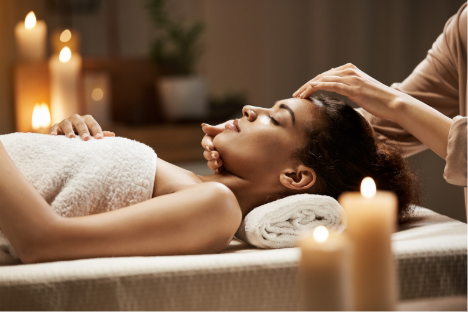Massage is not only a pleasant procedure but also a powerful tool for maintaining health and well-being. This technique has been around since ancient times, which proves its effectiveness, confirmed not only by time but also by numerous modern studies.
Needless to say, massage is also a powerful tool for maintaining physical and mental health. Its positive effect on blood circulation, muscle tone, and the nervous system makes it an indispensable part of taking care of your body. Therefore, don’t miss the opportunity to enjoy this procedure, which gives you vigor and vitality for the whole day. Go to any search engine, type in “massages near me,” and choose the one that’s right for you!

Why massage is necessary
Massage, as a comprehensive procedure, is widely used for both aesthetic and therapeutic purposes. The variety of massage techniques and their effectiveness make it an integral part of caring for one’s health and well-being.
One of the important aspects of massage is its relaxing effect. The skilled touch of a massage therapist can relieve muscle tension and improve muscle function. This helps to eliminate back and joint pain and restore mobility and comfort in everyday life.
Massage also helps normalize blood circulation, which means more efficient delivery of oxygen and nutrients to organs and tissues. This is important for the health of internal organs and improving the overall condition of the body.
It should be noted that massage is not limited to external effects on the skin and muscles. During the procedure, there is a deeper interaction with the body. Receptors respond to various movements of the specialist, which are converted into nerve impulses. This reduces receptor irritation, reduces tissue clamping, and restores their elasticity and mobility.
The benefits of massage
Massage is a powerful tool for maintaining and restoring health, which has a beneficial effect on various systems and organs of the body. During massage, the following occurs:
- Improved blood circulation, lymph flow, and blood circulation, which enriches tissues with oxygen and nutrients. It also helps the body get rid of harmful substances, waste products, and toxins faster.
- Relief of pain and muscle tension. Therapeutic massage effectively eliminates pain and relieves muscle tension. It can be especially helpful for conditions such as osteochondrosis, osteoarthritis, and scoliosis.
- Boosting immunity and strengthening the immune system, making the body more resistant to infections and diseases.
- Relaxation and stress relief, beneficial effects on the nervous system, and reduction of stress and anxiety. Regular sessions promote deep relaxation and improve mental and emotional well-being.
- Improves skin condition and cleanses it, making it more supple and healthy. This is especially relevant for manual modeling and facial massage.
- Restoring mobility and flexibility to muscles and joints, which is especially important in treating injuries and rehabilitation after surgery.
Each type of massage has its own characteristics and is aimed at solving specific problems. It can be both therapeutic and wellness-oriented, depending on the needs of the body. It is important to remember that effectiveness depends on correctly selected parameters: the pace, strength, and duration of the procedure, which must be individually tailored to each person.
How often should you get a massage?
The frequency and number of massage sessions depend on the purpose of the massage, the type of massage, the patient’s current state of health, and the specialist’s recommendations. Here are some general recommendations for different types of massage:
- Preventative. If massage is performed for preventative purposes or relaxation, it can be done 1-2 times a month.
- Therapeutic In the case of treating certain diseases or conditions, the frequency may be higher. For example, for osteochondrosis, a course of 10-15 sessions with a frequency of 2-3 times a week is recommended.
- Athletic. Athletes may get massages more often to help their muscles recover after training. It really depends on how intense their workouts are.
- Massage for injuries and rehabilitation. During recovery from injuries or surgery, massage may be prescribed daily, but it all depends on the nature of the injury and the doctor’s recommendations.
- Anti-cellulite. To combat cellulite, a course of 10-15 sessions is usually recommended, with a frequency of 2-3 times a week, after which you can switch to maintenance sessions once a month.
- Cosmetic facial massage. A course of 10-12 sessions twice a week is usually recommended, followed by maintenance treatments once or twice a month.
It is important to understand that each person is unique, and the optimal number and frequency of massage sessions may vary.